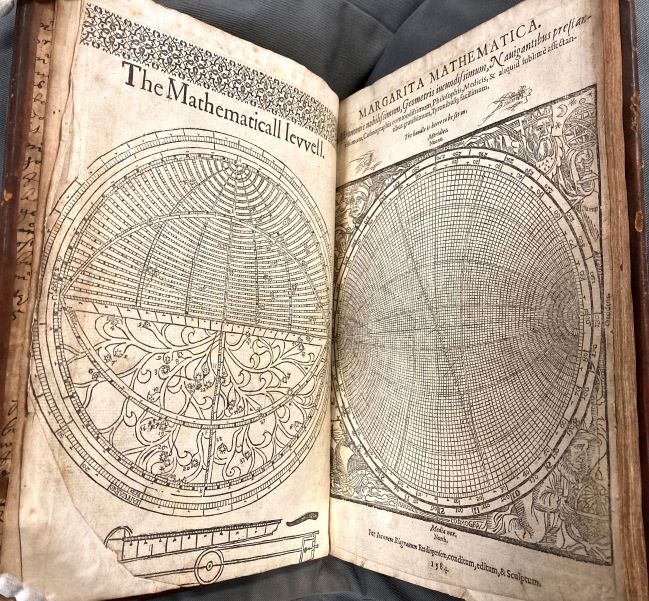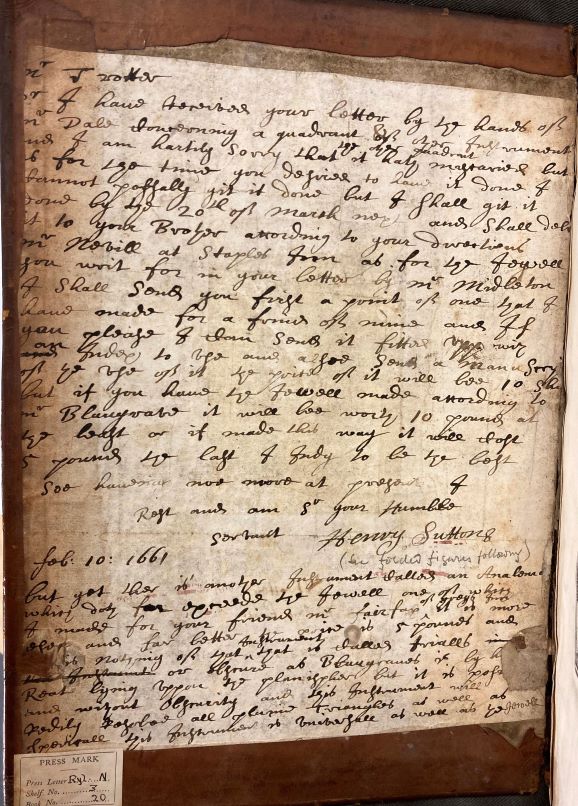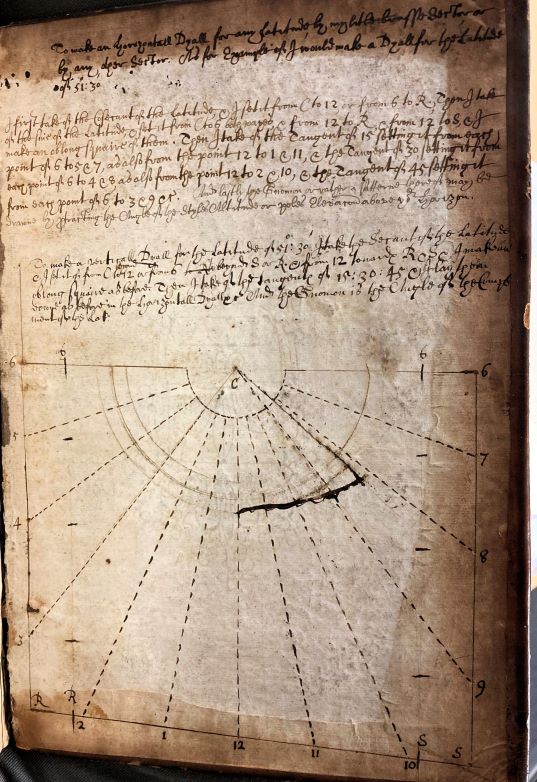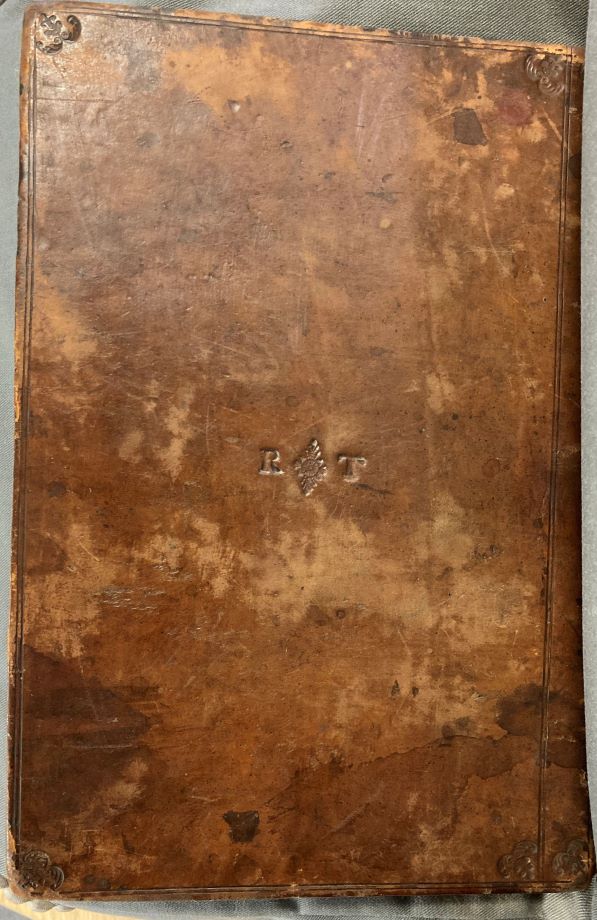There is a long history of books that contain, and/or describe, what could broadly be termed mathematical instruments. Famous landmarks along the way might include Chaucer’s Treatise on an Astrolabe (instructions on making and using an astrolabe addressed to ten-year-old Lewis); a manuscript of Ramon Llull’s Ars Magna now held at the British Library and thought to contain the oldest surviving example of a manuscript volvelle in the Western world, and the 1474 edition of Regiomontanus’, Kalendarium, which contained the first example of volvelles in print. Favourites from within our own collections include Peter Apian’s Cosmographicus Liber (1524) and the Billingsley Euclid (1570):
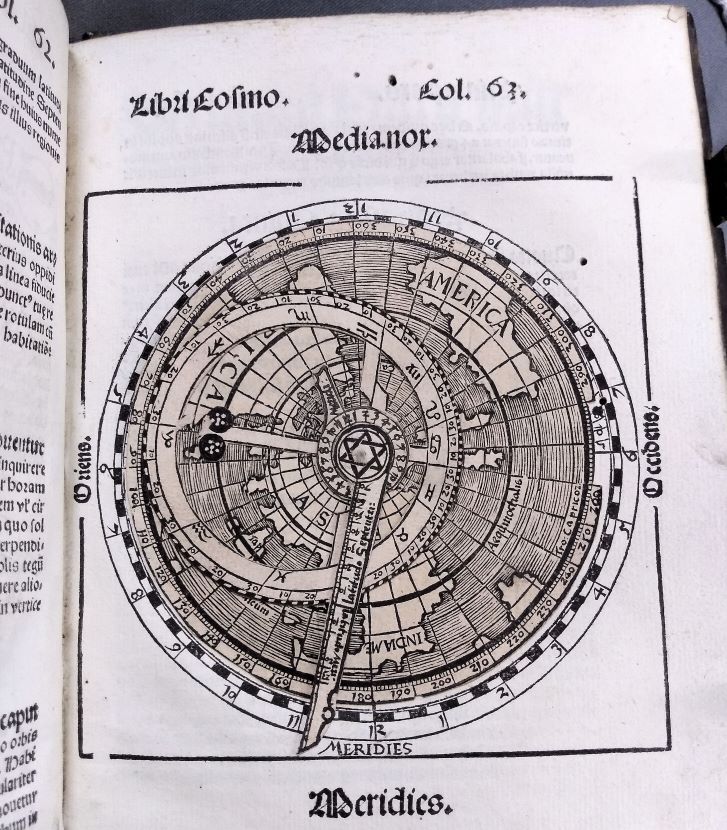
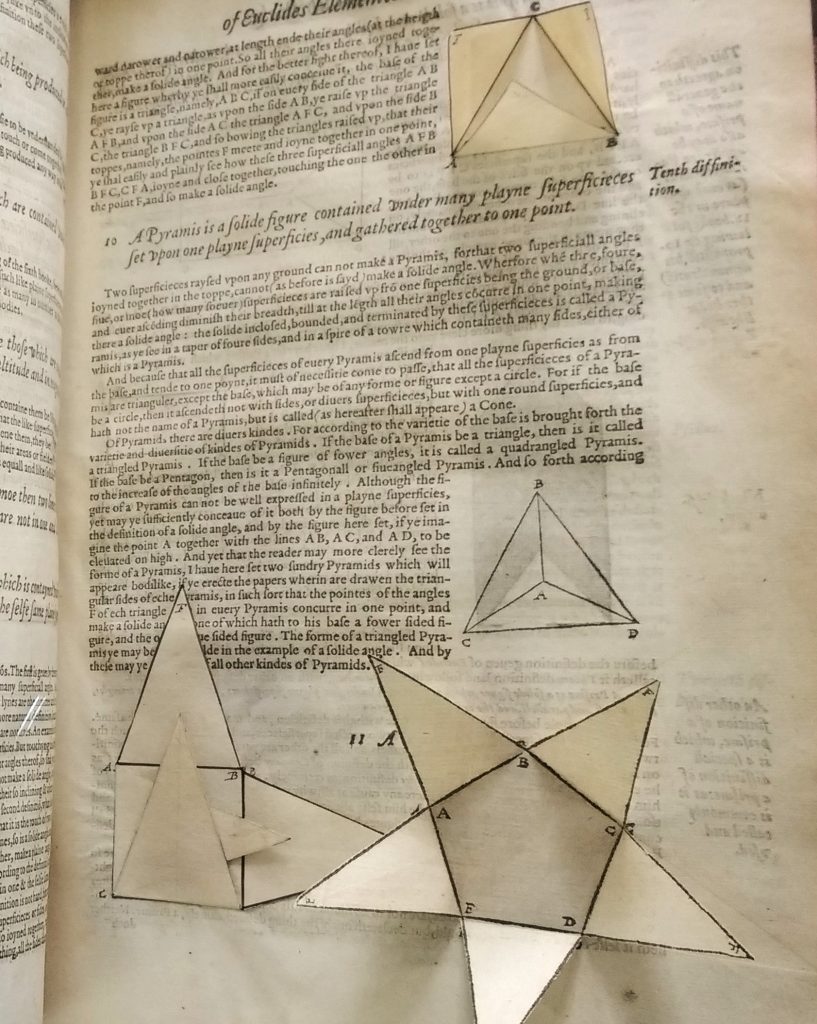
Each of these works are in a very real sense practical tools, as well as books. John Blagrave’s The Mathematical Jewel (1585) is another example of a book in this tradition. In it, the mathematician and instrument maker Blagrave describes a new type of astrolabe – in effect, a physical model of the visible universe, which could be used for an incredible number of different purposes, including to calculate the position of the stars, or to work out the time of day. The remainder of the title gives us some notion of Blagrave’s intended aims for his book, and instrument:
it performeth with wonderfull dexteritie, whatsoeuer is to be done, either by quadrant, ship, circle, cylinder, ring, dyall, horoscope, astrolabe, sphere, globe, or any such like heretofore deuised: yea or by most tables commonly extant: and that generally to all places from pole to pole. The vse of which iewel, is so aboundant and ample, that it leadeth any man practising thereon, the direct pathway (from the first steppe to the last) through the whole artes of astronomy, cosmography, geography, topography, nauigation, longitudes of regions, dyalling, sphericall triangles, setting figures, and briefely of whatsoeuer concerneth the globe or sphere: with great and incredible speede, plainenesse, facilitie, and pleasure …
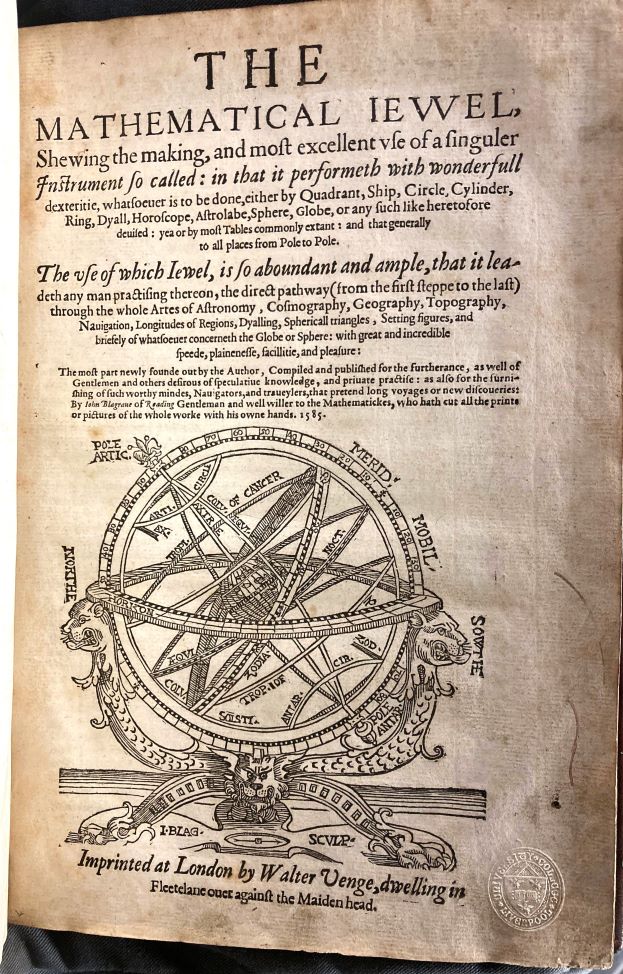
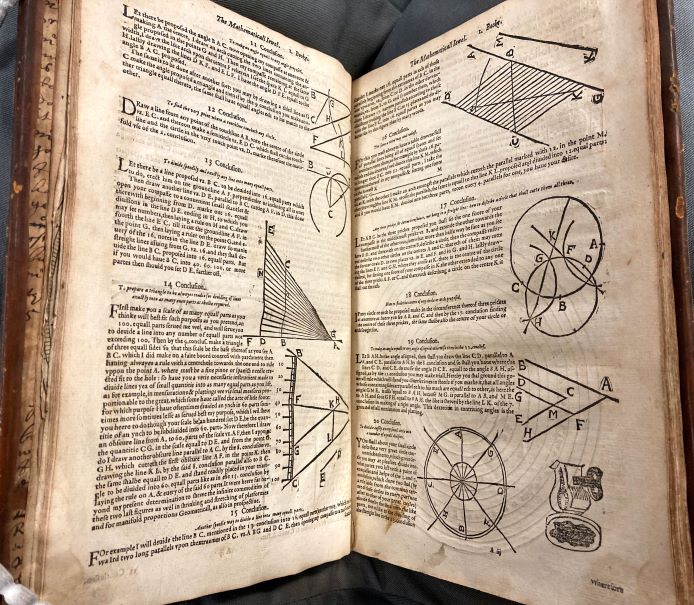
Intriguingly, the University of Liverpool copy (SPEC Ryl.N.3.20) still has the two woodcut images that make up the body of the instrument, but they appear to have been trimmed and pasted in – perhaps indicating that they initially belonged to another copy.
The number of mathematical instrument-makers with shops in London increased dramatically during the 1580s, suggesting that this was a time of rapid growth in the trade (Jardine, p. 117). Blagrave’s book was no doubt intended to capitalise on this moment. Indeed, Bennett and Jardine both make reference to the inter-connected nature of the book and mathematical instrument making trades, and a number of additions to the University of Liverpool copy of Blagrave’s printed work can be seen to exemplify the ways in which printed books supported mathematical instrument-making.
Pasted in at the front of the book is a letter signed by Henry Sutton, and dated 10th February 1661. Henry Sutton (c. 1624-1665) was one of the foremost instrument makers of the middle decades of the 17th century: “recognised since his own time as one of the most skilled in his trade” (Bennett, p. 83). As well as engraving on brass and wood to make instruments, he also made copper-plate prints for paper instruments and supplied engraved images for books.
In this letter Sutton is responding to a Mr. Trotter, both to apologise for the late fulfilment of an order for a quadrant (now promised by the 20th of March), and to follow-up on an earlier letter in which Trotter requested Sutton make him Blagrave’s ‘Jewel’:
…as for the Jewel you writ for in your letter by Mr. Middleton I shall send you first a print of one that I have made for a friend of mine and if you please I can send it fitted with an index to use and alsoe send a manuscript of the use of it…
In a postscript, Sutton – clearly an energetic businessman – suggests a third, in his opinion superior, instrument that Trotter might also like to own.
On the rear pastedown of the University of Liverpool copy we find evidence that Trotter took up the offer of “a manuscript for the use of it”, with a set of instructions in Sutton’s hand:
And bound-in at the front of the book, we find evidence of Sutton’s finished work, with three engraved plates, signed “Henricus Sutton” (one may well be the quadrant he promised in his letter, the other is dated 1660 – could it be the exemplar he promised?):
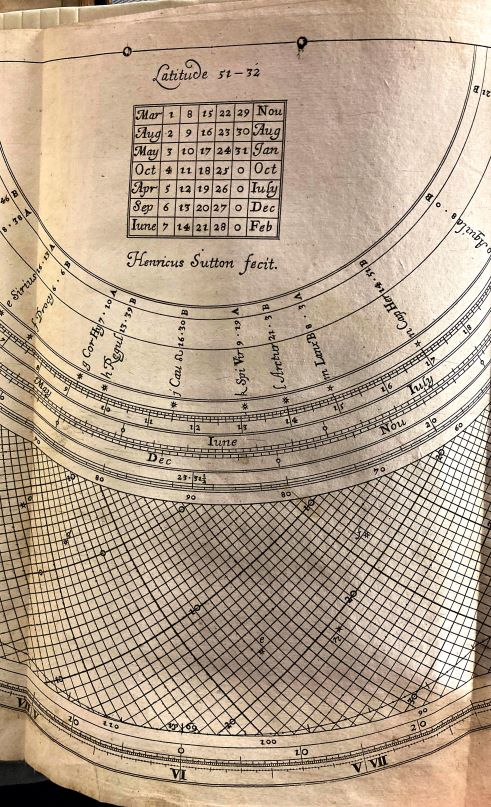
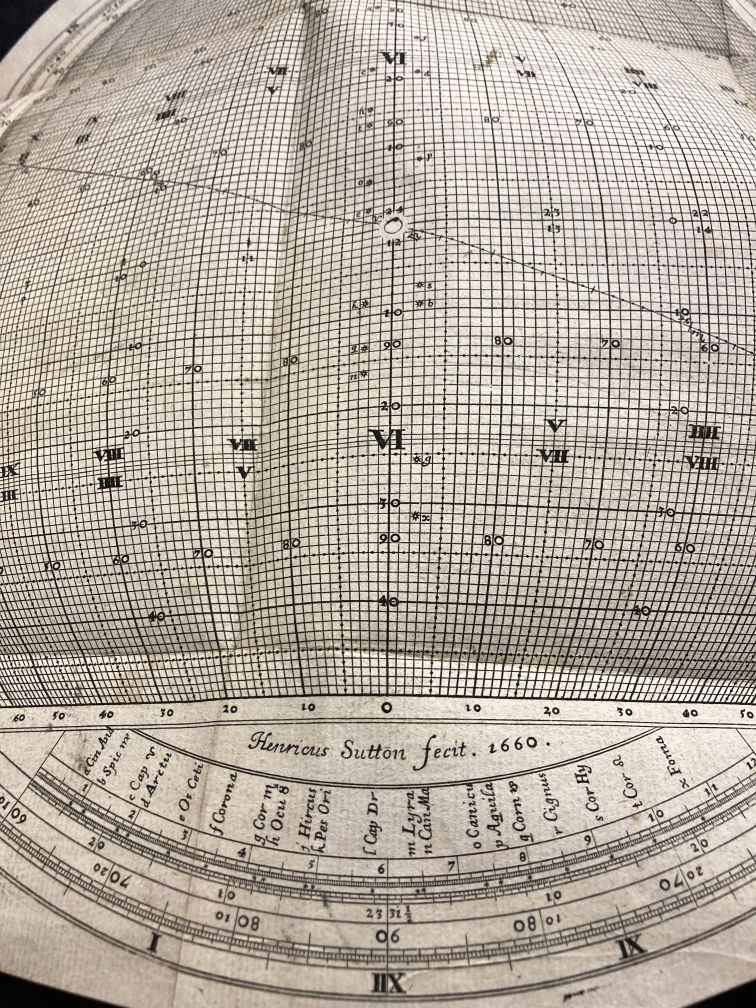
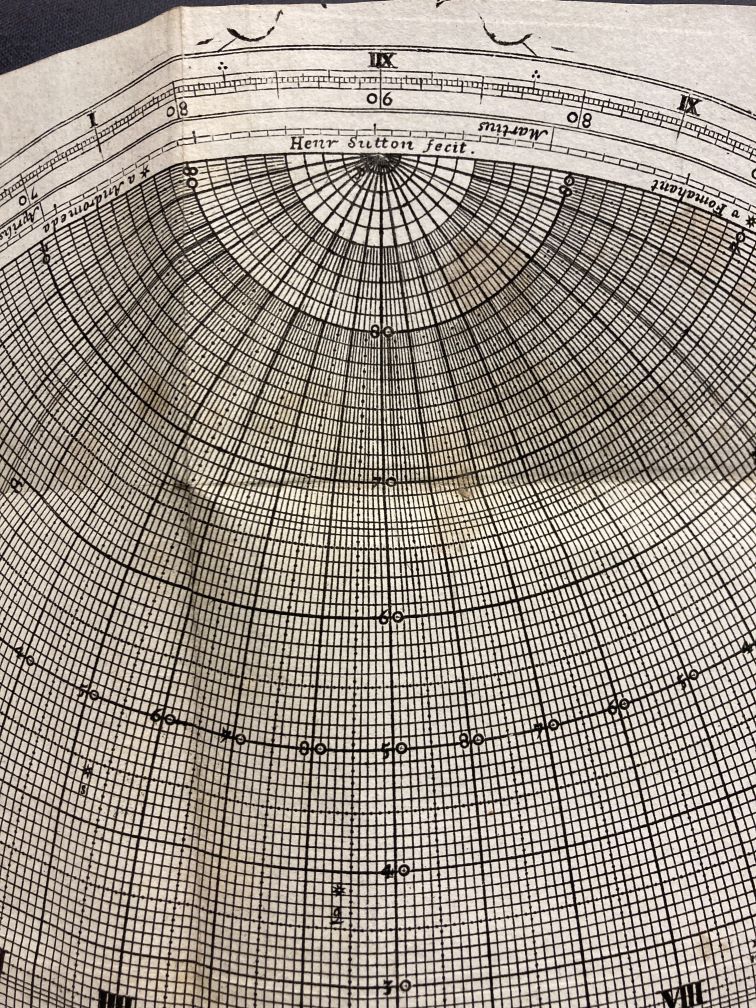
I will leave you to ponder Mr Trotter’s motivations for obtaining these instruments, bound into a book, with no apparent evidence that they have ever been put to use.
This book was donated to the University of Liverpool by Thomas Glazebrook Rylands (1818-1900), who had more than a passing interest in using books as tools for astronomical exploration.
References:
Jim Bennett, “‘That Incomparable Instrument Maker’: the Reputation of Henry Sutton”, The Whipple Museum of the History of Science, Cambridge: CUP, 2019, pp. 83-100.
Boris Jardine, “The book as instrument: craft and technique in early modern practical mathematics”, BJHS Themes (2020), 5, pp. 111-129.
Gerard L’E. Turner, Elizabethan Instrument Makers: The Origins of the London Trade in Precision Instrument Making, Oxford: Oxford University Press, 2000.
